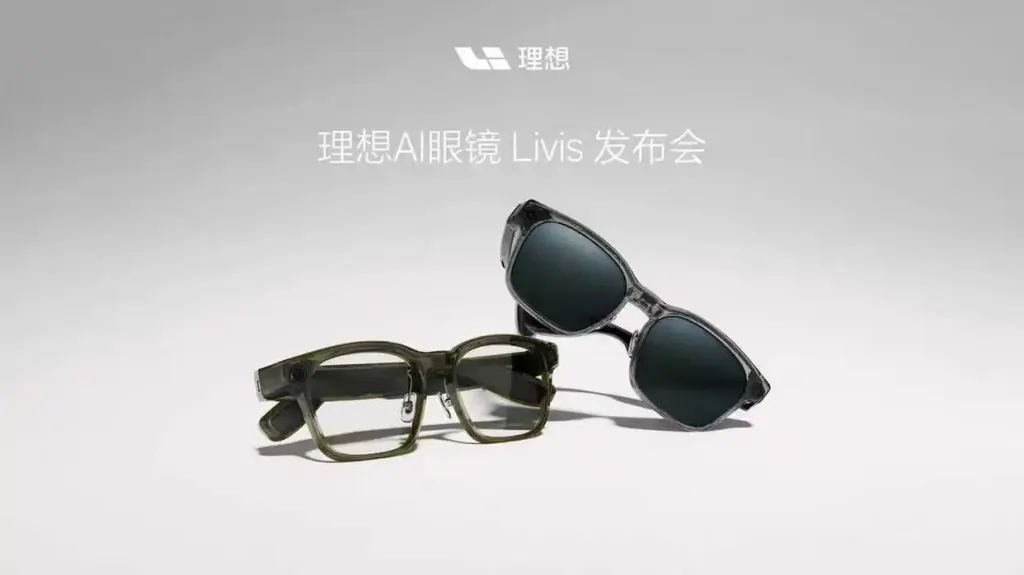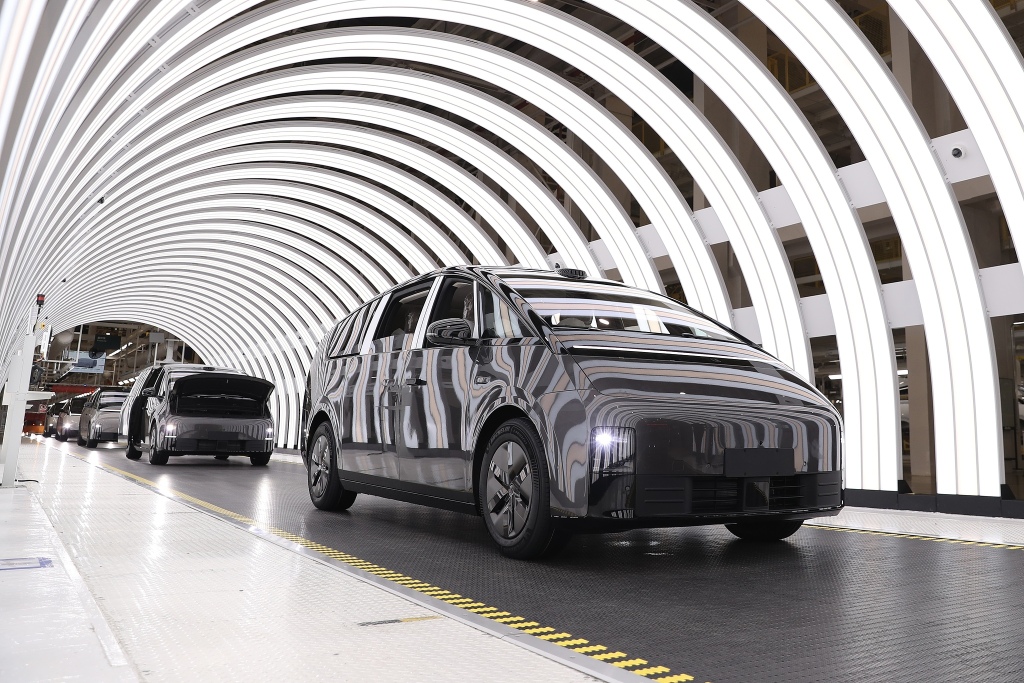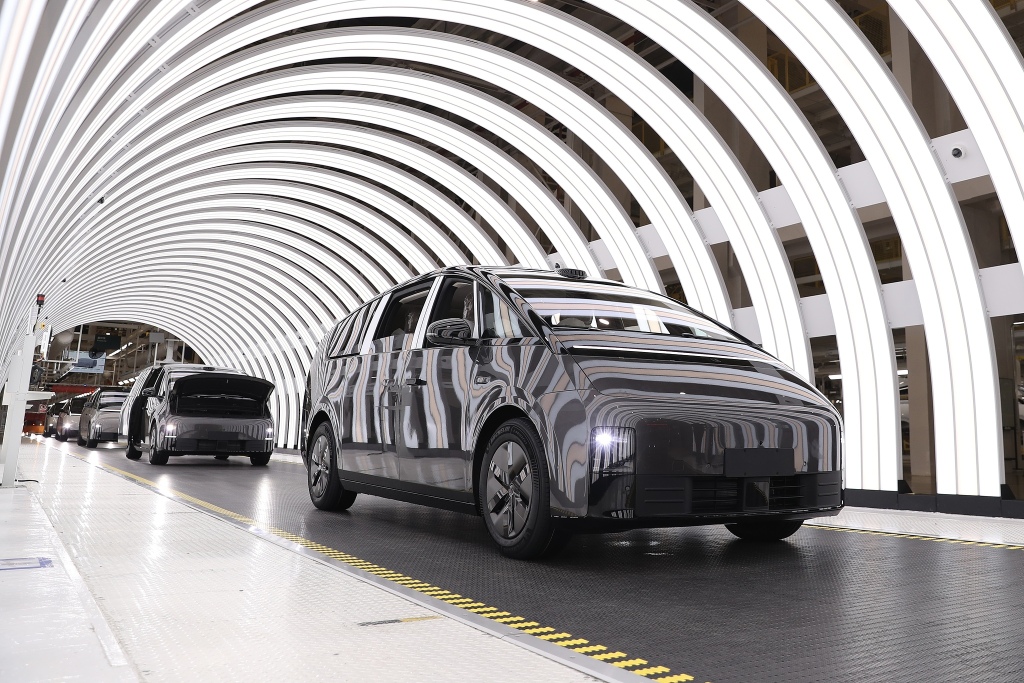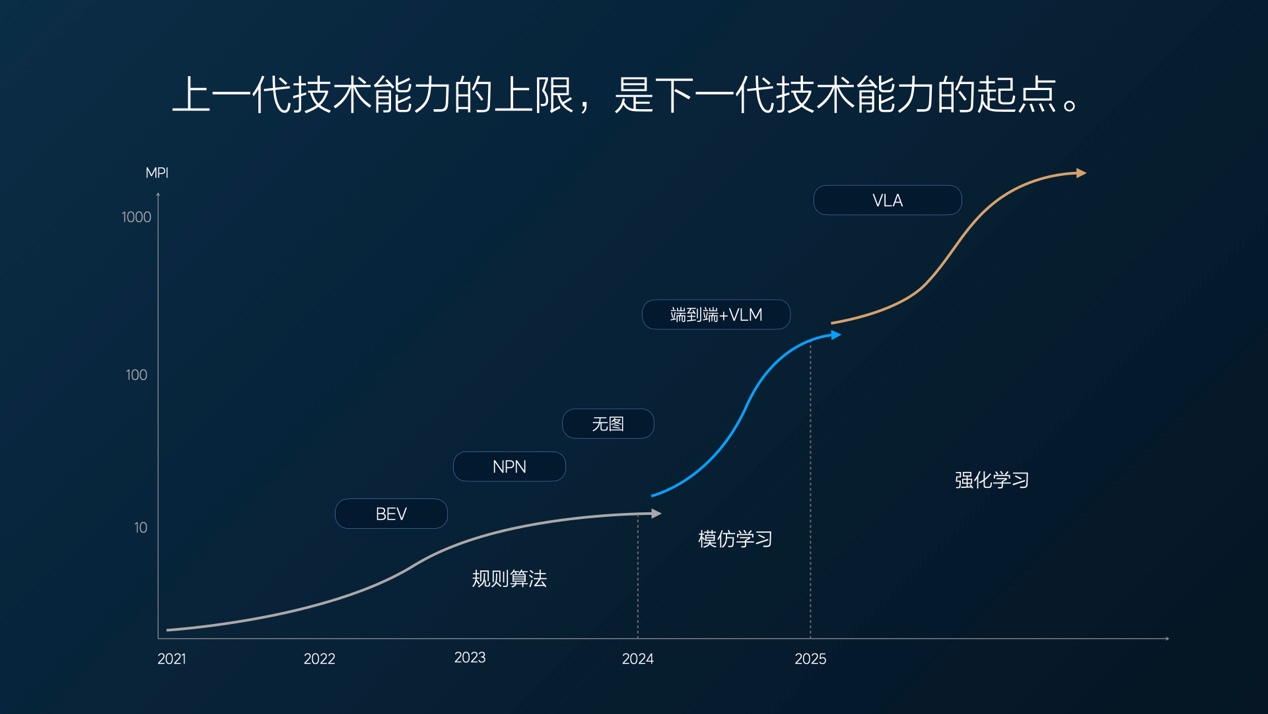
In the second half of the intelligent driving race, assisted driving has become a crucial battleground, with different technological approaches competing against each other. Late last year, Tesla's pioneering "end-to-end" model directly propelled intelligent driving into the era of AI big models. Now, Ideal Auto is poised to usher in a new wave of intelligent driving with its VLA driver big model.
VLA Driver, in short, makes AI your "personal driver." With the launch of Ideal's first all-electric SUV, the i8, the next-generation assisted driving technology based on Ideal's VLA Driver model will be simultaneously upgraded to all AD Max models (Thor-U platform and Orin-X platform).
The VLA driver model is another innovative implementation of Ideal Auto, a leader in self-developed assisted driving. It undoubtedly meets current user needs. According to a McKinsey report, by 2024, over half of Chinese consumers will consider the vehicle's intelligence when purchasing a car.
As always, Ideal Auto doesn't pursue technology for its own sake. Every innovation and iteration, as Ideal Auto CEO Li Xiang puts it, is "to solve problems." For example, Ideal's decision to launch extended-range technology ahead of pure electric vehicles was to address high battery costs and charging difficulties; its introduction of 5C Supercharging was to address slow charging times and long wait times.
At the level of assisted driving technology, Ideal Auto hopes that assisted driving can be aligned with human driving performance, increasing users' sense of security when using assisted driving functions.
Less than a year after fully rolling out its "end-to-end + VLM" solution, Ideal Auto has also launched the VLA driver model, ahead of other automakers. Behind this continuous evolution lies Ideal Auto's unwavering commitment to user experience. "First, Ideal Auto aims to provide existing users of its assisted driving system with a truly exceptional upgrade experience. Secondly, we hope that new users will immediately experience and appreciate the new technology," said Dr. Lang Xianpeng, Senior Vice President of Autonomous Driving R&D at Ideal Auto.
Ideal assisted driving technology continues to evolve, and the VLA driver model can truly think like a human.
Ideal Auto has been developing its own assisted driving since 2021, starting from the earliest 2D and 3D perception, to BEV (bird's eye view), NPN (prior network), mapless, and then to the "end-to-end + VLM" dual system architecture and today's VLA driver model, completing the technical reserves step by step.
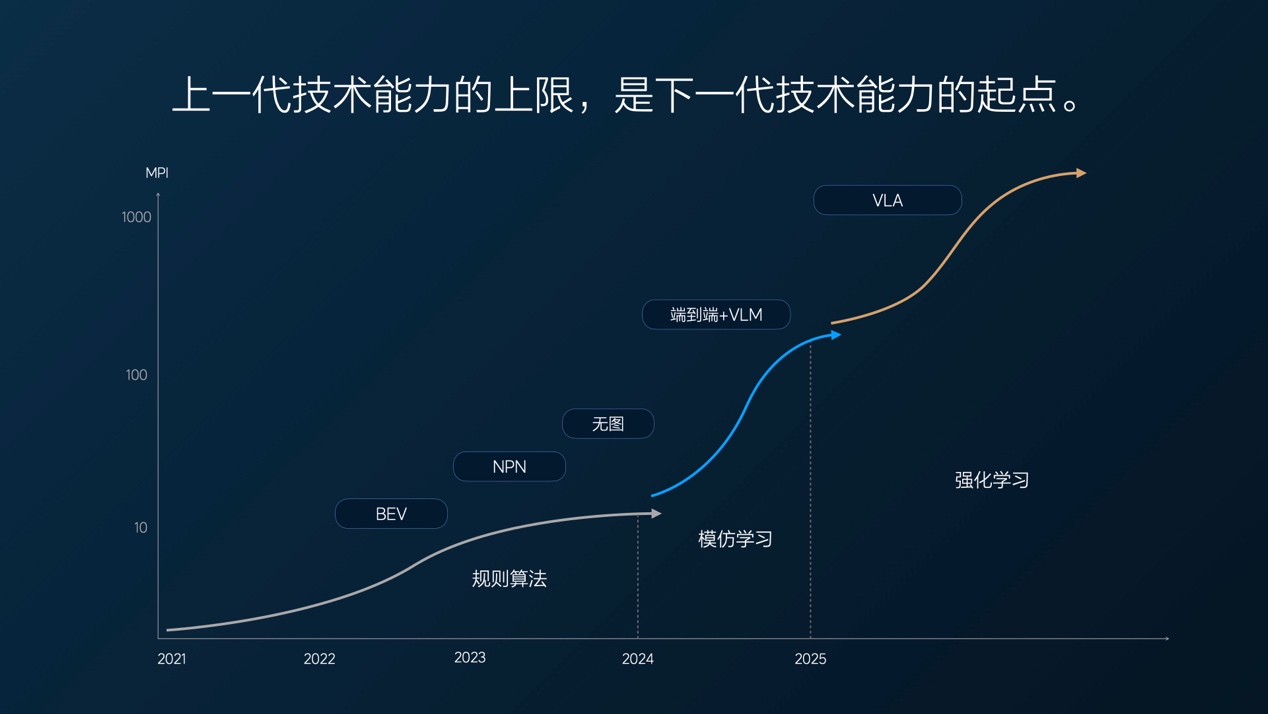
Among them, "end-to-end + VLM" is considered a watershed in intelligent driving technology. Before this, NPN, map-less, and map-free technologies were both artificial intelligence technologies. The most prominent feature of the artificial intelligence era was "rule-based algorithms," requiring engineers to design algorithms and write programs. Therefore, improving assisted driving performance relied on the ability and experience of engineers.
However, starting with "end-to-end + VLM", car companies no longer use traditional methods. The essence of the "end-to-end + VLM" architecture is imitation learning, which means training models with human driving data. The quantity and quality of data determine performance.
However, during the development of its own "end-to-end + VLM" solution, Ideal encountered a bottleneck in end-to-end training, resulting in slowing performance gains. Consequently, Ideal introduced the VLA driver model. VLA is more than a simple combination of an end-to-end model and a VLM model. The VLA driver model is essentially reinforcement learning, capable of autonomous learning. It trains the model using generated data in a simulated environment, with performance determined by the efficiency of simulation iterations.
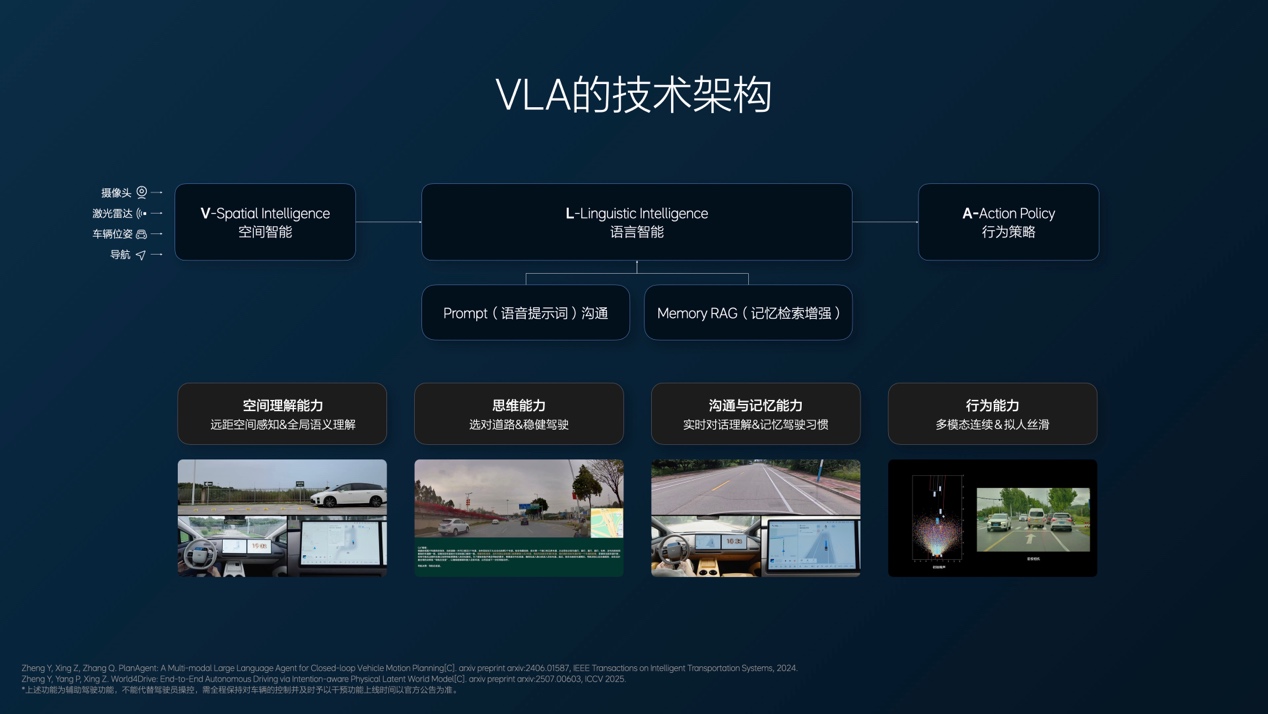
It's important to note that the VLA driver model wasn't created solely to address performance challenges. Li Xiang, Chairman and CEO of Ideal Auto, once said, "The end-to-end model is like a monkey driving a car. It can learn from human behavior, but it doesn't understand the physical world. Therefore, it can't make preventative decisions based on the scenario."
These constraints will no longer exist at the VLA driver model stage. A car powered by the VLA driver model will have the ability to perceive, think, and adapt to its environment, truly achieving intelligent driving that thinks like a human: able to understand, see, and find.
Specifically, users can now change the vehicle's route and behavior through voice commands. For example, they can directly tell the Ideal classmate "you are driving too fast" or "you should take the road on the left", and the vehicle can understand and execute these commands. For example, if the user cannot find a parking space in the basement of a shopping mall, they can say to the Ideal classmate "find a parking space and park", and the vehicle can find a parking space independently. The whole process does not rely on maps or navigation information, but relies on its understanding of space and logical reasoning ability.
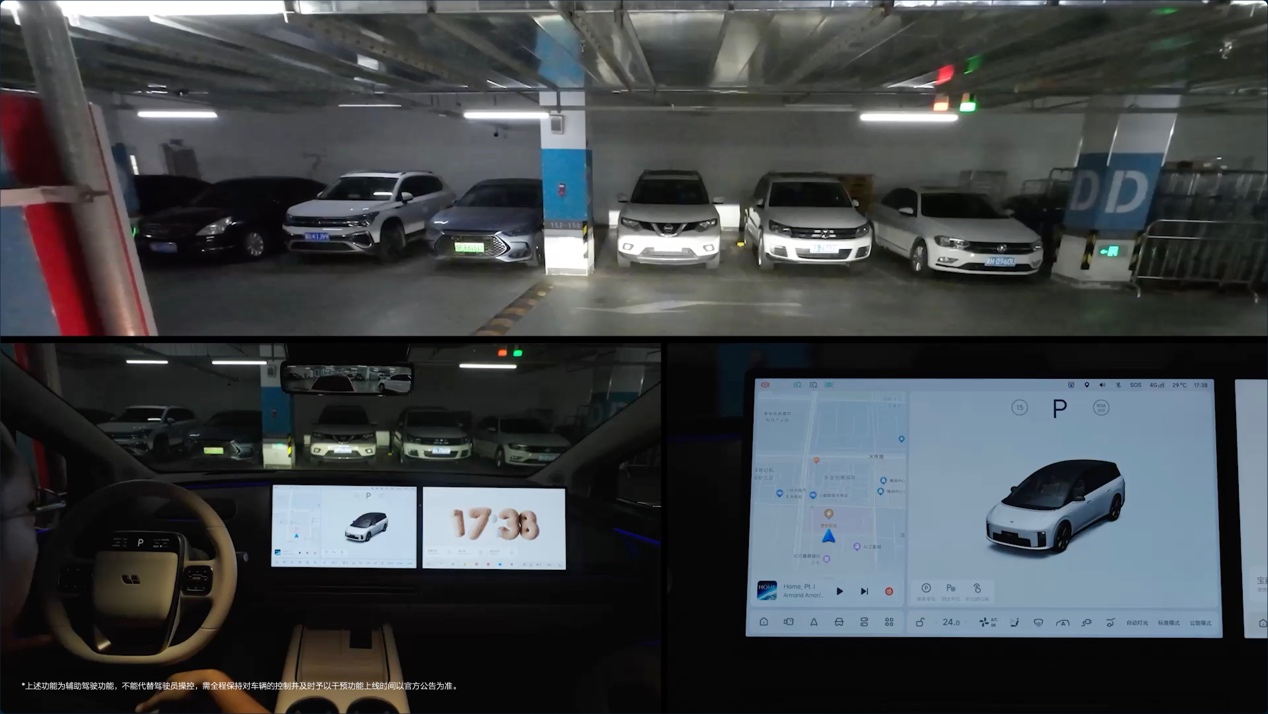
The VLA driver model reshapes the user experience, with comfort and safety as key considerations.
As mentioned earlier, VLA-enabled vehicles will make them better "personal drivers." Meanwhile, Ideal believes that at this stage, when it comes to the user experience of assisted driving, they are more focused on safety and comfort than efficiency. "For example, if you take the wrong road, although there is a loss of efficiency, we won't immediately correct it with some dangerous maneuvers. We will still pursue efficiency based on safety and comfort. Efficiency comes after safety and comfort," said Lang Xianpeng. "This is what we want to do now."
In recent years, as intelligent driving capabilities have improved, the drawback of a low threshold has also become apparent. When intelligent driving behavior doesn't align with human driving behavior, users can easily feel unsafe. The VLA driver model, with its ability to think and learn autonomously, may increase users' confidence in handling extreme scenarios.
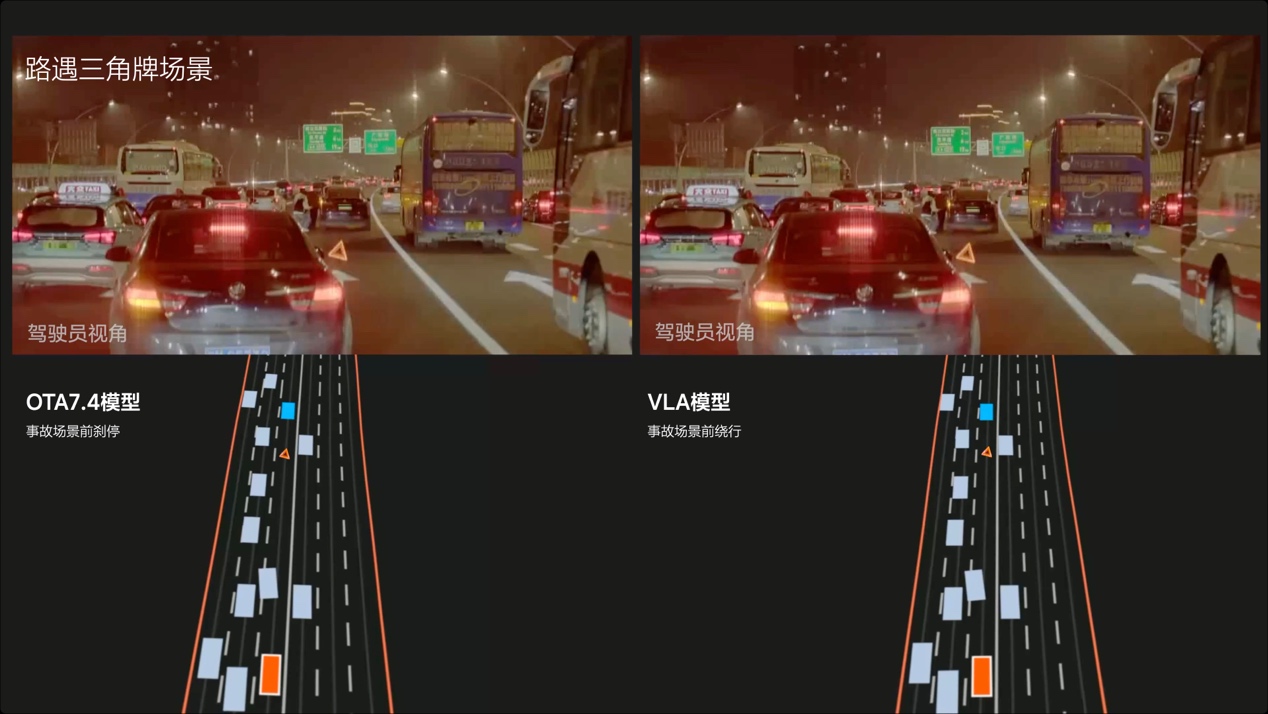
It's reported that Ideal i8 owners experience an accident every 600,000 kilometers, while those using the assisted driving feature experience an accident every 3.5 to 4 million kilometers. "Once the VLA model is improved, we hope to achieve an accident-free mileage of 6 million kilometers (10 times the human driving rate) with assisted driving," said Lang Xianpeng. "In addition to safety, we've focused on improving driving comfort. If you experience the assisted driving features of the Ideal i8, you'll find it's a significant improvement over previous versions."
As one of the i8's core selling points, VLA is expected to become a significant purchasing factor. Officially released data on assisted driving by Ideal Auto demonstrates that it is no longer a weak factor in purchasing decisions, but a key driver of brand sales growth. As of the first half of 2025, Ideal Auto's assisted driving test drive rate has exceeded 80%, with test drive satisfaction reaching 92%, and the percentage of user test drives has increased for ten consecutive months.
"I think with the support of the VLA model, assisted driving will develop towards a better idea of mobile space. This car can help you do other things on the basis of peace of mind and safety. I believe that day will come soon." Lang Xianpeng said.
Ideal AllinAI, VLA is not only used for intelligent driving, but is expected to empower more industries
In both AI Talk interviews, Li Xiang expressed Ideal Auto's determination to "become a world-leading artificial intelligence company." To this end, Ideal Auto has established four internal AI teams and dedicated nearly half of its R&D investment to AI. After extensive research and exploration, the Ideal team has identified VLA as its long-term technical direction. Ideal Auto believes that VLA, similar to human thinking and reasoning abilities, is the architecture most likely to achieve Level 4 capabilities.
The VLA model, debuting on the i8, is Ideal's first road-legal product. Admittedly, in certain long-tail driving conditions, VLA still presents challenges that are inconsistent with human values. To ensure that VLA models achieve near-human driving performance in the vast majority of scenarios, companies will need to develop robust data, computing power, and engineering deployment support.
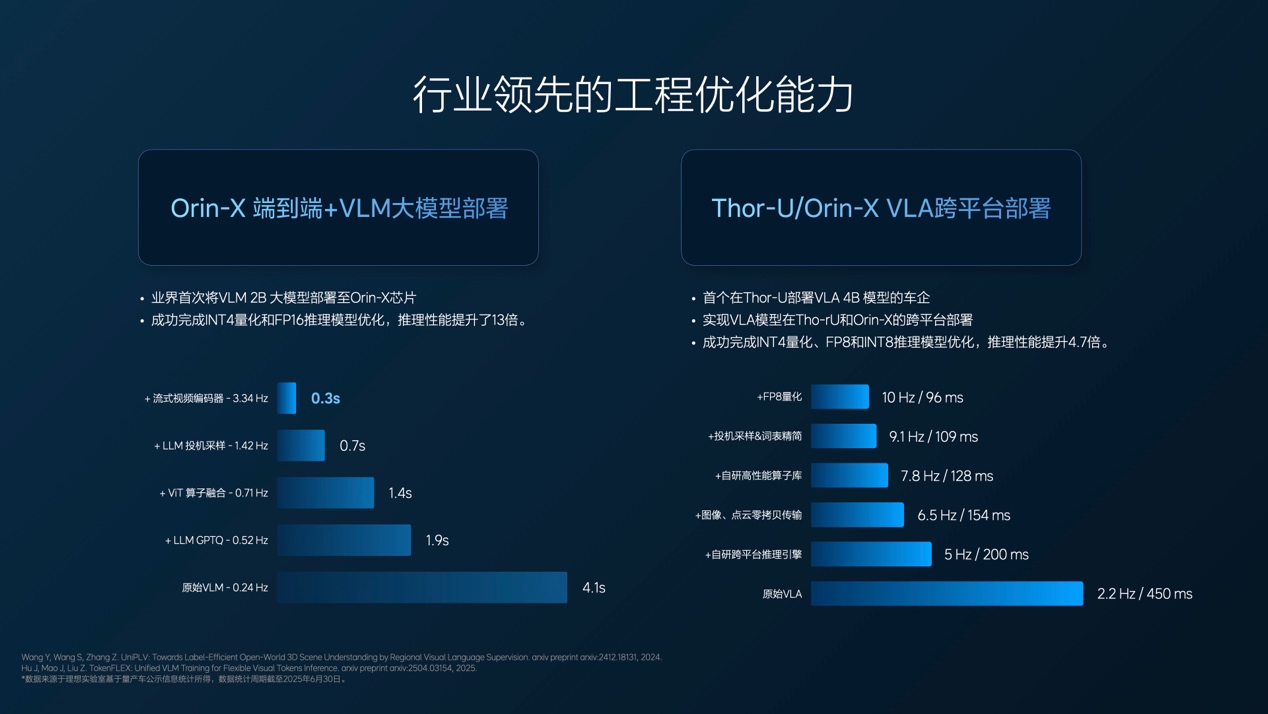
Thanks to sales growth, as of July 2025, Ideal has accumulated 1.2 billion kilometers of valid data. 1.2 billion kilometers of data ensures scene diversity, and combined with the simulation environment for intensive training, Ideal will continue to improve the VLA experience. At the same time, Ideal's leading engineering implementation capabilities will also support the rapid iteration of its VLA model. In the five years since Ideal began its self-developed intelligent driving in 2021, its hardware platform has been upgraded from the initial hardware platform based on Horizon's dual J3 chips to the current hardware platform based on Thor-U chips and Horizon J6M chips.
It is worth mentioning that the VLA technology solution is not only applicable to assisted driving, because its architectural ideas come from the fields of robotics and embodied intelligence. Ideal believes that VLA is also a general technical framework for the future field of robotics. To a certain extent, autonomous driving is also a robot, a robot with four wheels that travels autonomously. "The VLA architecture will continue until the prosperity of robots before it may be replaced by other technologies. Its technical potential is very large, and it is more like the laws of human intelligence development." Lang Xianpeng said, "VLA successfully integrates spatial intelligence, language intelligence and behavioral intelligence. Once the paradigm of combining the physical and digital worlds is successfully implemented, it will hopefully enable the coordinated development of multiple industries."
As we all know, Li Xiang firmly views AI as the cornerstone of all future businesses. Algorithms, computing power, and data are all prerequisites for AI success. Supporting basic training and inference computing power requires substantial financial support. Ideal has the money, currently holding over 100 billion yuan in cash. Equally important, until reaching that ultimate destination, the Ideal team will continue its exploration of cutting-edge algorithms, adhering to what they believe in and resisting shortcuts.
